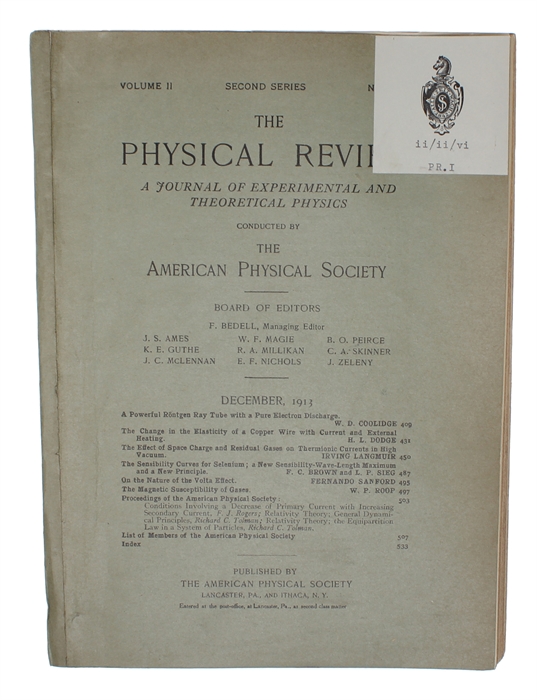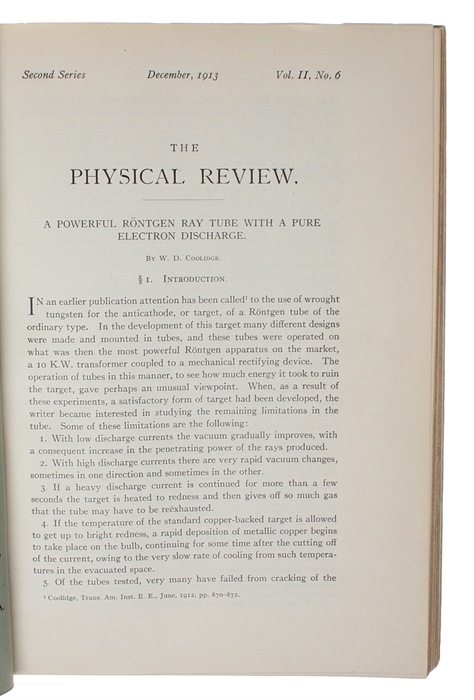"THE SINGLE MOST IMPORTANT EVENT IN THE PROGRESS OF RADIOLOGY"
COOLIDGE, WILLIAM.
A Powerful Röntgen Ray Tube with a Pure Electron Discharge.
Lancaster, PA and Ithaca, NY, The American Physical Society, 1913.
8vo. In the original printed wrappers. In: "The Physical Review, Vol II, Second Series, No. 6". With new paper back-strip and white paper label ("Alle Zeit Wach 1842") pasted on to upper outer corner of front wrappers. Light wear to extremities, internally fine and clean. Pp. 409-430. [Entire volume: Pp. 409-536].
First appearance of Coolidge seminal paper in which he laid the foundation for all modern the basis for all modern X-ray tubes. The Coolidge tube, which also utilized a tungsten filament, was a major development in the then-nascent medical specialty of radiology and is widely regarded as being the single most important event in the progress of radiology. “While many clever designs were implemented to compensate for the technical limitations of early X-ray tubes, the true milestone--what some experts call ‘the single most important event in the progress of radiology’--did not occur until nearly 20 years later [after Röntgen’s discovery of the X-ray]. In 1913, William Coolidge, working in the General Electric Research Laboratory, developed the first so-called ‘hot’ X-ray tube, subsequently called the Coolidge tube. Based on his earlier research, Coolidge had figured out how to make the cathode out of the metal tungsten, which has the highest melting point of all metals. With a cathode made primarily of tungsten, cathode rays could be generated by running an electric current through the cathode and heating it; the more the cathode was heated, the more cathode rays it emitted. Thus, with cathode rays generated by heat rather than gas molecule collisions, the Coolidge tube could operate in a perfect vacuum. “By the mid-1920s, the Coolidge tube had essentially replaced the old gas-filled tubes. In addition, Coolidge later designed other innovations so that higher voltages could be used to produce higher frequency X-rays. This led to the development of so-called ‘deep therapy,’ in which X-rays are used to treat deeper tissues without excessively damaging outer layers of skin. Thanks to Coolidge’s milestone redesign of the X-ray tube, the use of X-rays in medicine--for both diagnostic and therapeutic applications--expanded widely throughout the world from the 1920s ad onward. Today, Coolidge’s ‘hot’ tube design is still the basis for all modern X-ray tubes” (Jon Queijo, Breakthrough! How the 10 Greatest Discoveries in Medicine Saved Millions and Changed Our View of the World).
Order-nr.: 59849


